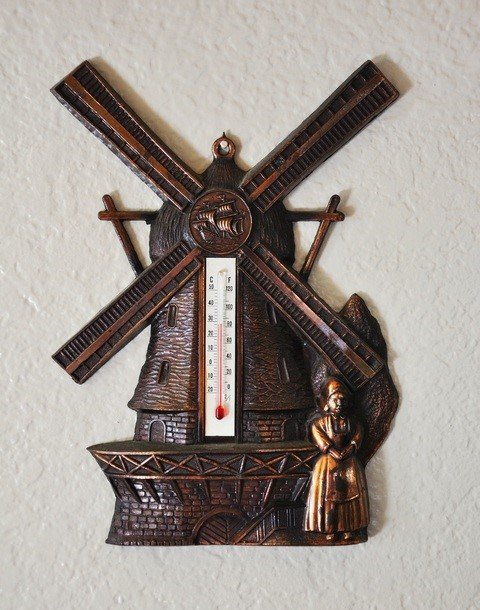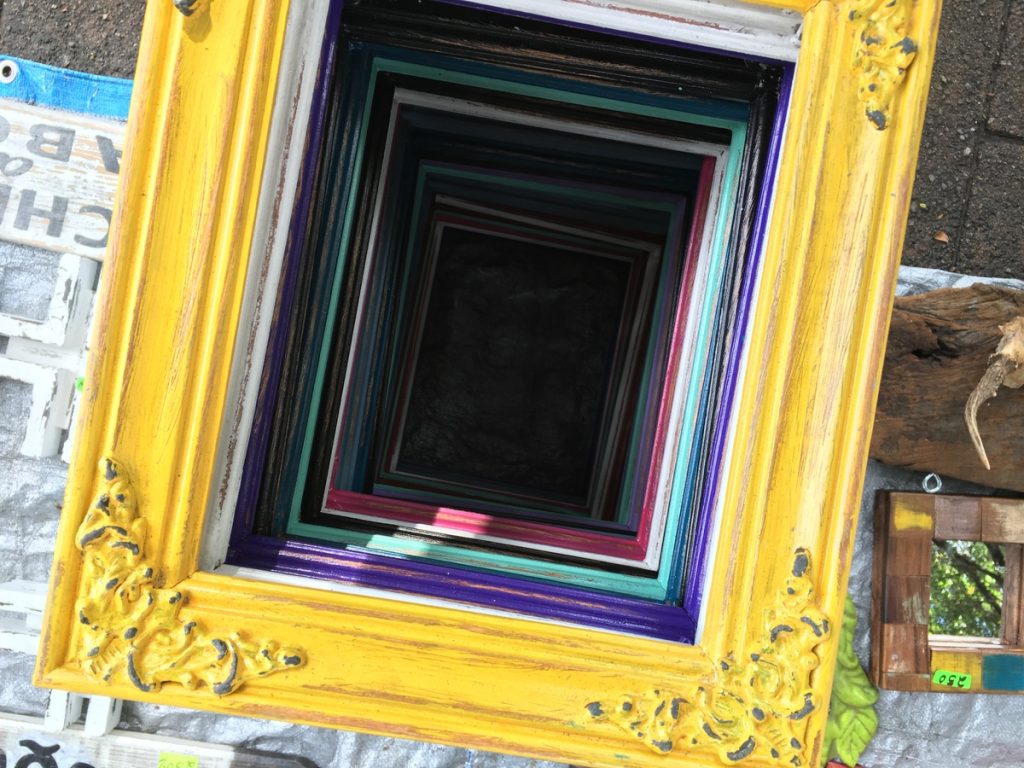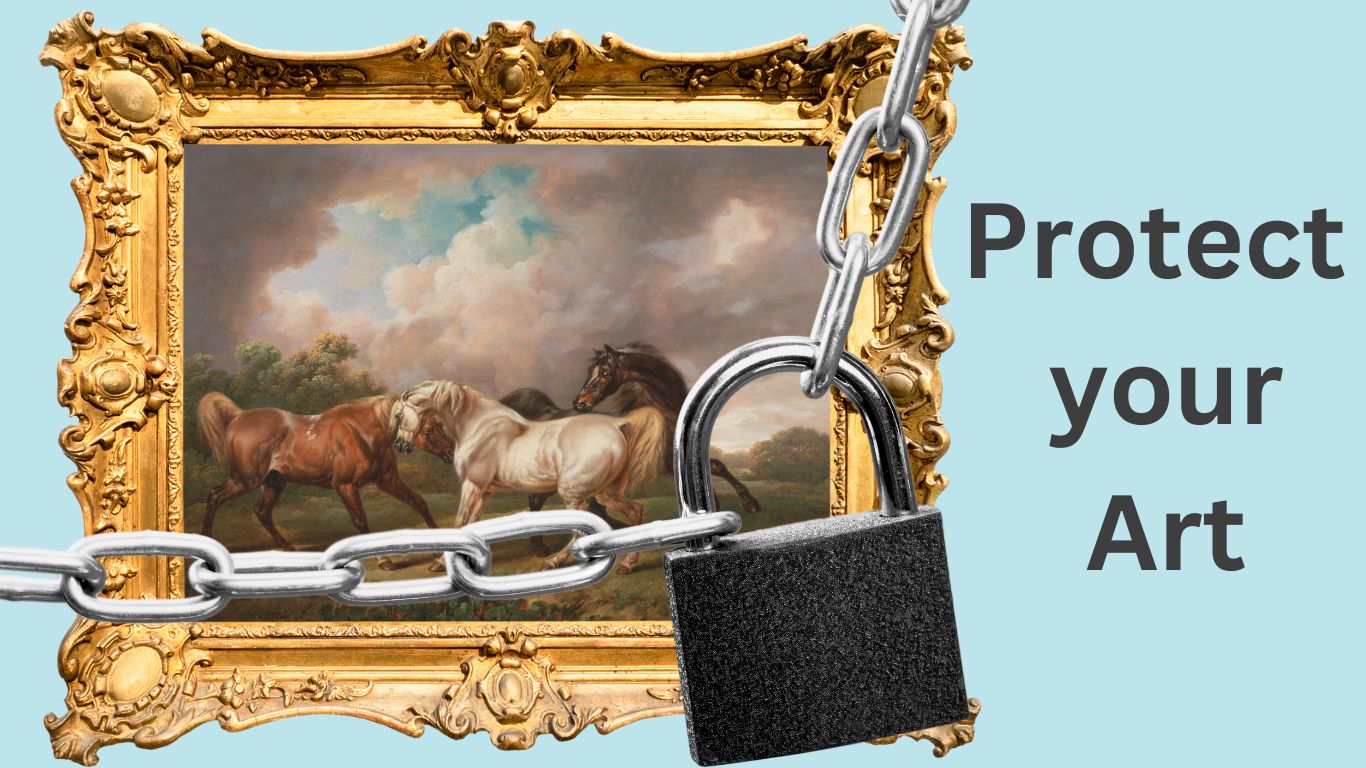Caring for Your Original Paintings: Maintenance Tips
Cleaning: Safe Methods to Clean and Preserve Your Paintings
Your beautiful paintings deserve the best care to keep them stunning for years. Proper cleaning and preservation can make a big difference in maintaining the vibrancy and longevity of your art. Here are some safe and easy methods to clean and preserve your paintings.

Dusting Gently
One of the simplest ways to care for your paintings is by dusting them regularly. Dust can accumulate over time, dulling the colors and details of your artwork. Use a soft, dry microfiber cloth or a feather duster to remove dust from the surface gently.
When dusting, avoid using too much pressure. You don’t want to damage the paint or canvas. Start at the top and work your way down, using light, sweeping motions. This will help keep your paintings looking fresh and clean without causing any harm.
For particularly delicate or valuable pieces, consider using a soft brush, such as a clean, natural bristle paintbrush. This can be especially useful for removing dust from intricate areas or textured surfaces.
Avoiding Moisture
Moisture is the enemy of most paintings, so it’s important to keep them dry. Avoid hanging your paintings in areas with high humidity, such as bathrooms or kitchens. Moisture can cause the canvas to warp and the paint to deteriorate.
If you need to clean a smudge or stain on your painting, never use water or liquid cleaners directly on the surface. Instead, use a dry cleaning method, such as gently rubbing with a kneaded eraser or a piece of bread. Yes, bread! The soft, doughy part of white bread can be used to lift dirt and grime without damaging the paint.
For more stubborn stains, it’s best to consult a professional art conservator. They have the expertise and tools to safely clean your painting without causing damage.
Protecting from Sunlight
While natural light can enhance the beauty of your paintings, too much sunlight can cause colors to fade over time. Protect your artwork by avoiding direct sunlight. Consider placing your paintings on walls that don’t receive direct sun or using UV-protective glass if they are framed.
If your home has large windows and lots of natural light, consider using curtains or blinds to filter the sunlight. This will help protect your paintings while allowing you to enjoy the natural light in your space.
Another option is to rotate your artwork periodically. By moving your paintings to different locations, you can ensure that no single piece is exposed to too much sunlight for an extended period.
Controlling Temperature
Temperature fluctuations can also affect the condition of your paintings. Extreme temperatures, whether too hot or too cold, can cause the canvas to expand and contract, leading to cracks in the paint. Aim to keep your paintings in a stable, moderate environment.
Avoid hanging your paintings near heat sources, such as radiators or fireplaces, and keep them away from air conditioning vents. These can cause sudden temperature changes, which can be damaging over time.
If you live in an area with significant temperature changes, consider investing in a climate-controlled storage area for your most valuable pieces. This can provide a stable environment that protects your artwork from temperature-related damage.
Handling with Care
Proper handling is crucial to preserving your paintings. Always use clean hands or wear gloves when handling your artwork to avoid transferring oils and dirt onto the surface. When moving your paintings, support them from the sides rather than the top to prevent stress on the frame and canvas.
If you need to transport your paintings, wrap them in acid-free paper or bubble wrap for protection. Be sure to secure the wrapping with tape, but avoid placing the tape directly on the painting or frame.
When hanging your paintings, use appropriate hardware to ensure they are securely attached to the wall. This can prevent accidents and potential damage from falls. Picture hooks or brackets designed for the weight and size of your painting are ideal.
Regular Inspections
Make it a habit to inspect your paintings regularly. Look for signs of damage, such as cracks, flaking paint, or discoloration. Early detection can help you address issues before they become more serious.
During your inspections, check the back of the painting and the frame. Sometimes issues, such as mold or insects, can start on the back and work their way to the front. By catching these problems early, you can take steps to protect your artwork.
If you notice any issues, don’t attempt to repair them yourself. Instead, consult a professional conservator who can assess the damage and recommend appropriate treatment.
Professional Cleaning
While regular dusting and light cleaning can keep your paintings looking good, professional cleaning is sometimes necessary. Art conservators have specialized knowledge and tools to clean and restore paintings safely.
Consider having your paintings professionally cleaned every few years, especially if they are valuable or have sentimental value. This can help remove built-up dirt and grime and address any minor issues before they become major problems.
Using Protective Coverings
For extra protection, consider using protective coverings such as glass or acrylic sheets. These can shield your paintings from dust, moisture, and physical damage. Be sure to use UV-protective glass if your artwork is exposed to light to prevent fading.
When using protective coverings, ensure a small gap between the painting and the glass or acrylic to allow for air circulation. This can help prevent moisture buildup and reduce the risk of mold growth.
Regular inspections and professional cleanings can help keep your artwork in top condition. With a little effort, you can preserve your beloved paintings and enjoy their beauty in your home.
Climate Control: How Temperature and Humidity Affect Art
Art is not only about the beauty it brings into your life but also about preserving that beauty. Climate control plays a significant role in maintaining the quality and longevity of your art pieces. Understanding how temperature and humidity affect your artwork can help you keep it in pristine condition for years.
The Importance of Stable Temperatures
Temperature fluctuations can wreak havoc on your art collection. When temperatures rise and fall rapidly, the materials in your artwork expand and contract. This can cause paint to crack, canvases to warp, and frames to become misaligned.
Ideally, keep your artwork in a room with a stable temperature. The recommended range is between 65°F to 75°F (18°C to 24°C). Avoid placing your art in areas prone to temperature changes, such as near windows, radiators, or air conditioning vents. Consistency is key to preventing damage.
If you live in a climate with extreme temperatures, consider investing in a climate control system for your home. This will help maintain a stable environment and protect your valuable pieces from the stress of temperature fluctuations.

Humidity: The Silent Enemy
Humidity levels can be just as damaging as temperature fluctuations. High humidity can cause mold growth, which can ruin canvases, paper, and even wooden frames. Low humidity, on the other hand, can dry out materials, leading to brittleness and cracking.
The ideal humidity level for art storage is between 40% to 60%. Use a hygrometer to monitor the humidity levels in your home. If you notice the levels creeping too high or too low, you can use a dehumidifier to reduce excess moisture, or a humidifier to add moisture to the dry air.
For those living in particularly humid or dry climates, investing in a humidity control system can be a wise decision to ensure your art remains in an environment that supports its preservation.
Seasonal Considerations
Different seasons bring different challenges for art preservation. In winter, heating systems can dry out the air, causing low humidity levels, and in summer, high temperatures and humidity can create a perfect breeding ground for mold and mildew.
During winter, keep an eye on your indoor humidity levels. If the air becomes too dry, consider using a humidifier to maintain a balance. In summer, use air conditioning and dehumidifiers to keep the humidity levels in check.
If you plan to travel or leave your home for an extended period, ensure your climate control systems are set to maintain a stable environment. This will prevent any unexpected damage to your art while you’re away.
Placement Matters
Where you place your artwork in your home can also affect its longevity. Avoid hanging your art on exterior walls, which can be more susceptible to temperature and humidity changes. Instead, choose interior walls that are less likely to be affected by these fluctuations.
Rooms with stable climate conditions, such as living rooms or bedrooms, are ideal for displaying art. Basements and attics are typically more prone to extreme temperature and humidity changes, making them less suitable for valuable pieces.
If you have valuable or sensitive pieces, consider professional art storage solutions, since they are equipped with climate control systems specifically designed to protect art.
Protective Measures
In addition to maintaining the right climate, there are other protective measures you can take to safeguard your art, such as UV-protective glass or acrylic to shield your art from harmful ultraviolet rays, which can cause fading over time.
Consider using acid-free materials for framing and matting. Acidic materials can degrade over time and damage your artwork. Acid-free materials provide a safe environment that helps preserve the integrity of your pieces.
Regularly inspect your art for any signs of damage, such as discoloration, mold, or cracking. Early detection can prevent minor issues from becoming major problems. If you notice any concerning changes, consult a professional conservator for the best course of action.
Air Quality
Good air quality is another important factor in preserving your art. Pollutants and dust can settle on the surface of your artwork, causing damage over time. Regularly clean the air filters in your home and consider using an air purifier to reduce airborne contaminants.
Avoid using harsh chemicals or aerosol sprays near your artwork, as these can leave residues that damage the surface. If you need to clean the area around your art, use gentle, non-toxic cleaning products.
Ventilation is also crucial. Proper air circulation helps maintain a stable climate and prevents the buildup of moisture, which can lead to mold growth. Ensure your home is well-ventilated, especially in rooms where you display your art.
Professional Help
If you have valuable or irreplaceable pieces, it’s worth consulting with a professional conservator. They can provide expert advice on the best ways to preserve and care for your artwork. Regular professional inspections and cleanings can help identify potential issues before they become serious.
Professional conservators have specialized knowledge and tools to handle delicate and valuable art. They can perform treatments that are beyond the scope of typical home care, ensuring your pieces remain in the best possible condition.
Framing and Glazing: Protecting Your Art with Proper Framing Techniques
Proper framing and glazing are essential for preserving your artwork and enhancing its presentation. The right frame not only complements your art but also protects it from dust, light, and physical damage. Here are some tips to help you choose the best framing techniques for your cherished pieces.

Choosing the Right Frame
The frame you choose should enhance your art without overpowering it. Start by considering the style and color of your artwork. A simple, classic frame can highlight a bold, modern piece, while an ornate frame might suit a traditional painting.
Frames come in various materials, including wood, metal, and composite. Wood frames are versatile and offer a range of finishes, from rustic to polished. Metal frames are sleek and modern, perfect for contemporary art. Composite frames are budget-friendly and come in many styles, mimicking wood or metal.
When selecting a frame, consider the room where the art will hang. The frame should complement the decor and create a cohesive look. If you’re unsure, a neutral frame is a safe choice that works well with most art styles and color schemes.
Matting Matters
Matting not only adds a decorative border around your artwork but also provides a buffer between the art and the frame. This helps prevent damage from condensation and keeps the art from sticking to the glass.
Choose acid-free mats to avoid discoloration over time. Acidic materials can cause your art to yellow and degrade. Acid-free mats protect your artwork and keep it looking fresh for years.
The color of the mat should complement the artwork without distracting from it. Neutral colors like white, cream, or black are versatile choices. For a more dramatic effect, consider a colored mat that picks up a hue from the artwork itself.
The Benefits of Glazing
Glazing refers to the glass or acrylic that covers your artwork. It protects your art from dust, dirt, and physical damage. Glazing can also protect your art from harmful UV rays that cause fading.
There are several types of glazing to consider. Standard glass is affordable and provides clear protection. However, it can be heavy and breakable. Acrylic is lighter and shatter-resistant, making it a safer choice, especially for larger pieces or high-traffic areas.
For added protection, opt for UV-filtering glazing. This type of glazing blocks harmful ultraviolet rays, helping to prevent your art from fading over time. Museum-quality glazing offers the highest level of protection and clarity, ensuring your art is preserved in the best possible condition.
Proper Mounting Techniques
How you mount your artwork in the frame is crucial for its preservation. Improper mounting can cause warping, buckling, or even damage the art. Always use acid-free mounting materials to protect your art from discoloration and degradation.
For works on paper, hinging with acid-free tape is a common method. This technique allows the art to expand and contract with changes in temperature and humidity, preventing buckling. For heavier pieces, such as paintings on canvas, use corner brackets or stretcher bars to secure the art without applying pressure to the surface.
If you’re framing valuable or fragile artwork, consider consulting a professional framer, because they have the expertise and tools to ensure your art is mounted securely and safely.
Protecting Against Light
Light exposure can cause colors to fade and damage delicate materials. While UV-filtering glazing helps, it’s also important to consider the placement of your framed art. Avoid hanging your art in direct sunlight or under harsh artificial lighting.
Instead, choose locations with indirect or diffused light. If you use spotlights to highlight your art, opt for LED bulbs. LED lights produce less heat and UV radiation compared to traditional bulbs which reduces the risk of damage.
For rooms with large windows, consider using curtains or blinds to control the amount of natural light. This not only protects your art but also helps create a comfortable viewing environment.
Maintaining Your Framed Art
Once your art is framed and hung, regular maintenance is key to keeping it in top condition. Dust the frame and glazing regularly using a soft, dry cloth. Avoid using water or cleaning products, as these can damage the frame or seep behind the glazing.
Inspect your framed art periodically for signs of damage, such as discoloration, mold, or loose mounting. Early detection allows you to address issues before they cause significant harm. If you notice any problems, consult a professional conservator for advice on the best course of action.
If you need to move or transport your framed art, handle it with care. Use both hands to support the frame and avoid placing pressure on the glazing. For long-distance moves, consider wrapping your art in protective materials and securing it in a sturdy box.
Custom Framing
Custom framing is an excellent option for unique or valuable pieces. Professional framers can create frames tailored to your artwork’s specific needs, ensuring the best possible protection and presentation.
When working with a framer, discuss your preferences and any concerns you have about preservation. A good framer will consider factors like the type of art, its value, and the environment where it will be displayed. They can recommend the best materials and techniques to protect and enhance your art.
Custom framing may be more expensive than ready-made frames, but it’s a worthwhile investment for preserving your cherished pieces. The right frame can transform your artwork, adding value and beauty to your home.
Handling: Best Practices for Moving and Storing Paintings
Handling paintings with care is crucial to preserving their beauty and value. Whether you are moving to a new home or simply rearranging your art collection, following best practices can prevent damage and keep your pieces in excellent condition. Here are some tips to help you safely move and store your paintings.

Preparing for the Move
Before you start moving your paintings, it’s essential to prepare them properly. Begin by cleaning the paintings gently with a soft, dry cloth to remove any dust. This helps to prevent scratches and ensures your art looks its best in its new location.
Next, take the time to inspect each painting for any existing damage. Note any loose frames, cracks, or other issues that might worsen during the move. If you find significant problems, consider getting them fixed before moving the artwork.
For particularly valuable or fragile pieces, consider consulting a professional art mover. They have specialized knowledge and equipment to handle art with the utmost care. If you’re doing it yourself, make sure you have all the necessary packing materials ready.
Packing Like a Pro
Packing your paintings properly is key to protecting them during the move. Start by wrapping each painting in acid-free tissue paper or plastic wrap. This creates a protective barrier that prevents scratches and damage.
After wrapping, cover the painting with bubble wrap for additional cushioning. Make sure to wrap it securely, but avoid applying too much pressure, as this can damage the surface. For larger paintings, consider using foam boards or corner protectors to safeguard the edges.
Place the wrapped paintings in sturdy, appropriately sized boxes. If you don’t have a box that fits, consider custom-built wooden crates for maximum protection. Fill any gaps in the box with packing peanuts or crumpled paper to prevent the painting from shifting during transport.
Moving with Care
When moving your paintings, handle them with clean hands or wear gloves to avoid transferring oils and dirt. Always carry paintings from the sides, not the top, to prevent stress on the frame and canvas.
If you’re moving multiple paintings, load them upright, like books on a shelf, to distribute weight evenly. Place smaller paintings between larger ones to create a stable stack. Secure the stack with moving straps or ropes to prevent shifting.
For long-distance moves, avoid stacking paintings flat on top of each other, as this can cause damage. Instead, use individual boxes or crates for each piece. If you’re using a moving truck, make sure the paintings are the last items loaded and the first items unloaded to minimize handling.
Storing Paintings Safely
Proper storage is essential for preserving your paintings when they’re not on display. Choose a storage space that is clean, dry, and climate-controlled. Extreme temperatures and humidity can cause damage, so aim for a stable environment with temperatures between 65°F and 75°F and humidity levels between 40% and 60%.
Avoid storing paintings in basements, attics, or garages, as these areas are prone to temperature and humidity fluctuations. Instead, opt for an interior room or a professional storage facility designed for artwork.
When storing paintings, place them upright on padded surfaces. Use acid-free paper or cloth to cover the paintings and protect them from dust and dirt. Avoid stacking paintings on top of each other, as this can cause pressure and damage.
Hanging and Displaying
Once you’ve moved your paintings, hanging them properly is as important as storing them. Use appropriate hardware, such as D-rings or picture hooks, that can support the weight of the painting. Make sure the hardware is securely attached to both the wall and the painting.
For heavier paintings, consider using wall anchors or brackets for extra support. This will ensure your art stays securely in place and prevents accidents. When hanging, make sure the painting is level and positioned at the right height for optimal viewing.
If you’re hanging multiple pieces, plan the arrangement before you start. Lay out the paintings on the floor to visualize the layout and adjust as needed. This helps create a cohesive and balanced display that enhances your space.
Regular Maintenance
Once your paintings are in place, regular maintenance is key to keeping them in top condition. Dust the frames and surfaces regularly with a soft, dry cloth. Avoid using water or cleaning products, as these can damage the paint or frame.
Periodically check the hardware and mounts to ensure they’re still secure. Over time, screws can loosen, and frames can shift, so it’s important to make adjustments as needed. This will prevent accidents and keep your art looking its best.
Inspect your paintings for any signs of damage, such as cracks, discoloration, or mold. Early detection can help you address issues before they become more serious. If you notice any problems, consult a professional conservator for advice on the best course of action.
Professional Help
For valuable or delicate paintings, consider hiring professionals for moving and storing. Art movers have the experience and equipment to handle your art with the utmost care, reducing the risk of damage. Professional storage facilities offer climate control and security, providing peace of mind that your art is well-protected. If you’re unsure about the best practices for handling your specific pieces, don’t hesitate to seek expert advice. Professional conservators can provide guidance on proper care, packing, and storage techniques tailored to your artwork.




